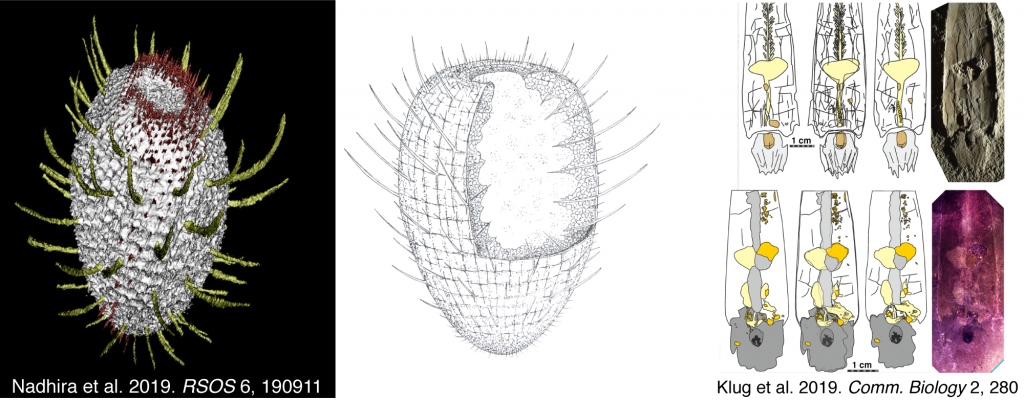Two new articles, to which I collaborated while a postdoc in IPANEMA, are published Open Access today. Based on the anatomical description of fossils using advanced imaging techniques, partly synchrotron-based, they provide new insights into the origin and evolution of two important groups of animals.
The first article, led by Ardianty Nadhira and Mark Sutton at Imperial College London, describes a new 425-million-year-old sponge, Carduispongia pedicula, from Herefordshire, UK. Its anatomy, revealed in 3 dimensions by synchrotron X-ray and physical-optical tomography, as well as its chemistry, allow establishing a robot portrait of the first sponges, and therefore likely of the first animals.
Reference: Nadhira A., Sutton M.D., Botting J.P., Muir L.A., Gueriau P., King A., Briggs D.E.G., Siveter Da.J. & Siveter De.J. 2019. Three-dimensionally preserved soft-tissues and calcareous hexactins in a Silurian sponge: implications for early sponge evolution. Royal Society Open Science 6, 190911. Find the article (Open Access) here

The second study, led by Christian Klug at the University of Zurich, is a re-description of Gordoniconus beargulchensis, one of the oldest known coleoids (the group now comprising octopuses, squid and cuttlefish), from the Carboniferous (~320 million years ago) of Montana. While early coleoids had external straight conical conchs (e.g. the famous fossil orthocerids and belemnites), multi-spectral imaging of Gordoniconus reveals new anatomical details promoting new scenarios for the early evolution of coleoids and the internalization of their conch, typical of modern forms.
Reference: Klug C., Landman N.H., Fuchs D., Mapes R.H., Pohle A., Gueriau P., Réguer S. & Hoffmann R. 2019. Anatomy of the first Coleoidea and character evolution in the Carboniferous. Communications Biology 2, 280. Find the article (Open Access) here
